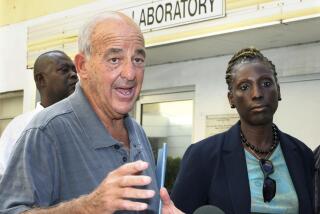Ozone Loss
I believe it is important to correct several oversights in your article “Loss of Ozone Calls for Speedy Action, Experts Say” (Part I, March 21). The recent report by the Ozone Trends Panel on March 15 provides clear evidence that the accelerating depletion of stratospheric ozone confronts us with potential threats far more immediate and serious than previously expected. There is broad agreement that chlorofluorocarbons (CFCs) are the major contributing factor to ozone depletion; therefore, it is absolutely essential that any product offering a non-threatening alternative be presented accurately in the media. This was not the case for a new CFC replacement called BIOACT EC-7.
The article made a factual error in describing BIOACT EC-7 as flammable (having a flash point of 100 degrees F or below). The product is actually designated as combustible (flash point between 100 and 200 degrees F) which places it in the same category as a variety of other materials and chemicals used in the manufacture of printed circuit boards and printed wiring assemblies.
Although the article noted that AT&T;, a major user of CFCs for cleaning printed wiring assemblies, has already decided to convert 25-33% of its CFC consumption to BIOACT EC-7 over the next two years, the writer did not indicate a wide range of potential customers are just being introduced to this product, and their responses have been generally enthusiastic. In fact, just the opposite impression was relayed.
WILLIAM R. GALLOWAY JR.
Chairman and President
Petroferm Inc.
Fernandina Beach, Fla.
More to Read
Start your day right
Sign up for Essential California for news, features and recommendations from the L.A. Times and beyond in your inbox six days a week.
You may occasionally receive promotional content from the Los Angeles Times.





